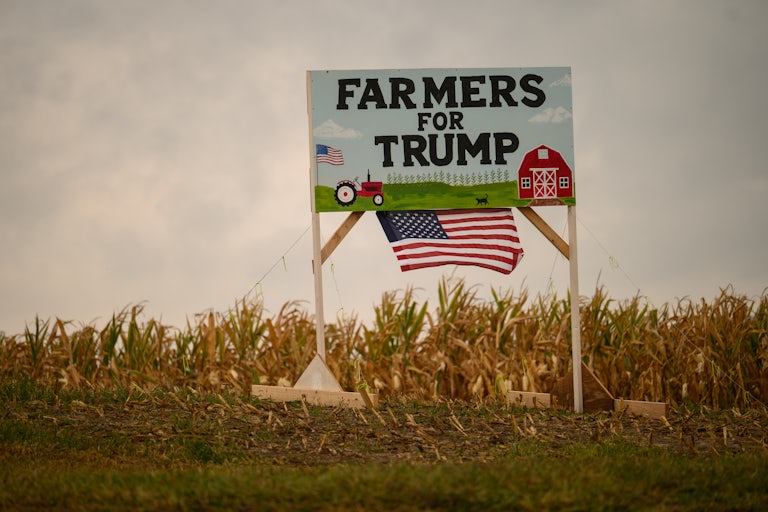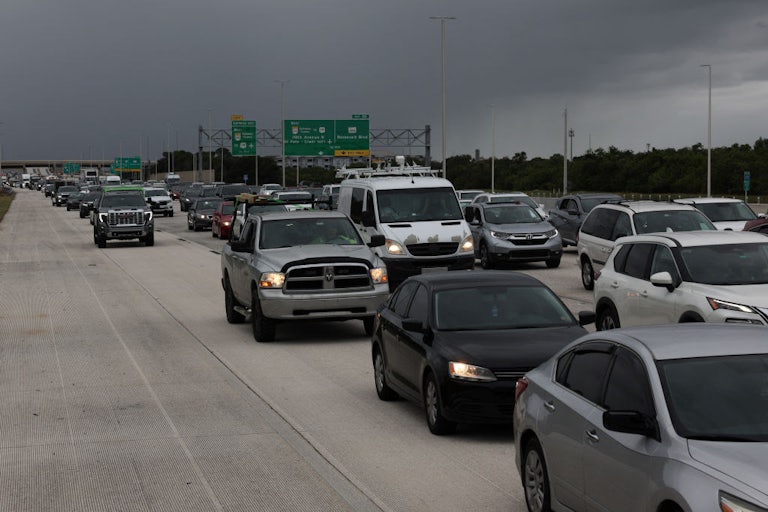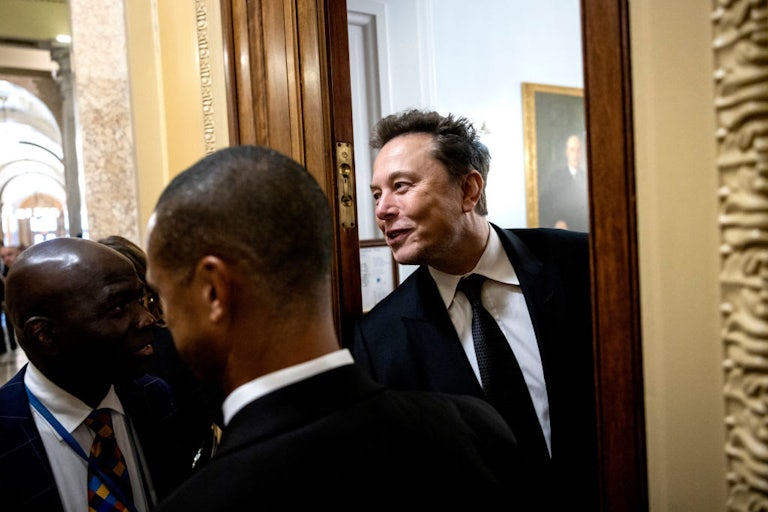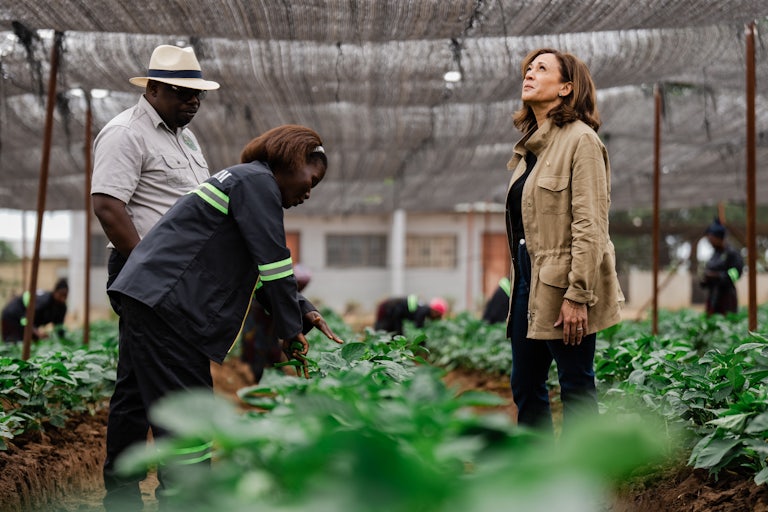The Dirty Secret to a Sustainable Halloween
Finding good, cheap low-waste candy is hard. U.N. negotiations taking place next month could make it easier.

I’m not sure what I expected when I typed “low-waste Halloween candy” into a search box a few days ago. I know that trying to celebrate a holiday sustainably can get overwhelming—I’ve written before about the proliferation of bonkers advice when it comes to sustainable Christmas trees. But hey, I like Halloween, I’m told my new neighborhood gets a lot of trick-or-treaters, and if I’m going to bulk-order candy I’d rather it not be packaged in layers of petroleum products.
Alas, I learned that this is much easier said than done.
Let’s review some of the top options: First, I came across blog posts suggesting mini-boxes of Junior Mints or Milk Duds or Nerds, which are some of the few candies available in cardboard packaging. I was intrigued until I realized how hard it was to find a one-stop place for these brands. Some stores were sold out, some didn’t carry them at all, some only carried them in strangely high or low quantities, or their prices were ridiculous, and some online retailers couldn’t ship in time. Also, no one in my household or friend circle really likes these candies (the responses in the group chat, when I checked, were vicious), so I’ve no idea what we’d do if the number of trick-or-treaters was lower than anticipated and I suddenly found myself with 60 Nerds boxes to dispose of. Food waste isn’t sustainable, either.
Then there are the eco-friendly brand suggestions: various fair-trade chocolates in paper or foil wrappers; gummies and lollipops in plastic wrappers that made it into sustainable recommendations lists because they’re organic. I did, in the end, buy some of the more cost-effective of the chocolates, since they had good packaging and I’m pretty confident that the excess will be consumed. Many of these options, though, are quite pricey—particularly when compared to getting a plain-old variety bag at CVS or Walmart. If you’re talking about a high-traffic trick-or-treating neighborhood, stocking up solely on fair-trade paper-wrapped chocolates could easily cost you $150 or more.
Then there’s the ubiquitous suggestion to buy from one of those bins at a bulk store “and then portion out sweets like gummy bears or candy corn into paper or cloth bags,” as phrased by The New York Times in its climate advice column on Monday. This is a lot of work, and if we’re talking about candy that’s completely bare, then putting waxed paper around it at home seems unlikely to reassure parents raised on urban myths about contaminated or poisoned treats. Bulk bins of foil-wrapped candy might be another story. But I’ve also no idea where to find these, let alone cheaply; the only store I can instantly name that had a bunch of these bins lies in my hometown, 400 miles away, and it closed nine years ago.
The point isn’t that finding low- or no-waste candy to hand out is impossible. The problem is that it’s hard: It’s likely to be expensive or time-consuming or both.
What makes this situation especially maddening is that there are ways to make this easier for consumers. It shouldn’t be this hard to avoid an explosion of plastic every October. The real answer to the question of how to have a greener Halloween (and everyday life in general) lies not in specialty chocolate but in a wonky meeting being held next month that many of the people searching for sustainable candy recs probably haven’t heard about: the fifth meeting of the UN’s Intergovernmental Negotiating Committee tasked with drafting “an internationally legally binding instrument on plastic pollution.”
Taking place in Busan, Republic of Korea, this meeting is supposed to be the last negotiation session before the treaty is signed early next year. That timeline may wind up being revised. “We are not where we would have liked to be in the process,” Rachel Radvany, an environmental health campaigner with the Center for International Environmental Law, told me. “We haven’t honestly gotten into a true negotiation,” she said, “except on a few of the more specific provisions.”
The fundamental problem is that a lot of states with significant oil wealth don’t want a treaty that reduces plastics production. Instead, they’d prefer to focus on recycling—which, as numerous TNR writers have noted, has never been a serious solution, as it’s not feasible for many types of plastic, releases more microplastics and toxic chemicals in the process, and doesn’t reduce the overall quantity of plastic. Leaked documents have recently shown that the petrochemical industry deliberately spread the false idea that most plastics would be recycled in order to keep producing plastic.
There are lots of policies, however, that governments could enact to reduce our overall reliance on plastic. It’s not just about bans on plastic bags or water bottles—many countries have banned single-use plastics, “and we’re still seeing the problem getting worse,” Radvany said. “You have to have policies that prioritize reuse systems and reuse services and give funding for that to build that out.” Ideally, reusable materials should be nonplastic ones to begin with, she added, given that even reusable plastics contain a lot of toxic chemicals. Policymakers could also ban those chemicals. Figuring out which ones to ban “could be assessed by a scientific body within the treaty to determine if they’re carcinogenic or things like that. And then those chemicals would be phased out.” Alternatives to plastics already exist, and more could be developed at scale if the treaty were to include funding for that.
Getting any of these policies enacted would be hard. But it’s also arguably easier than asking millions of consumers to de-plastic their lives in a global economy that’s suffused with plastic. “Once it’s produced in the market, you as a consumer can’t control what you’re being exposed to,” Radvany said. “They’re finding microplastics in everything, every part of our bodies,” and researchers are only beginning to understand how this is affecting human health.
“You can put in a lot of effort to have a green Halloween, to buy less plastics, to feed your kids food that’s not packaged in plastic, but there’s only so much you as a consumer can do,” she said. “It’s exhausting and impossible to stop exposing yourself to these things.”
Think she’s exaggerating? Go ahead, run around town trying to get a decent deal on hundreds of pieces of candy in sustainable packaging. Then do it for the costumes and decorations. Did I mention that Christmas is right around the corner?
Good News/Bad News
![]()
Researchers are studying ancient Roman concrete for clues about how to make modern concrete manufacturing—a massive greenhouse gas emitter—more sustainable, The New York Times’ Amos Zeeberg reports.
Heat pumps were supposed to be the easy switch, the win-win proposition that saved people money and cut emissions without too much massive infrastructure investment needed. But “heat pump investment in the United States has dropped by 4 percent in the past two years, even as sales of EVs have almost doubled,” The Washington Post
reports. The experts the Post interviews seem divided: This trend could be because of inflation and interest rates, but it could also be because contractors lack training and there’s a lot of misinformation circulating.
Stat of the Week
2 weeks
That’s how long it took after a widely publicized “radical” nonviolent environmental protest for surveys to show an increase in support for more moderate environmental groups, in a recent study. Instead of turning people off environmentalism, the researchers suggest, so-called radicals (and their disruptive but nonviolent protests) might play a role “in driving change.”
What I’m Reading
One issue will decide Arizona’s future. Nobody’s campaigning on it.
Amid the deluge of political ads in the swing state of Arizona right now, reporter Jake Bittle notices one thing missing: the Western water crisis that’s getting worse and worse, while negotiations over how to manage it sputter and stall.
Arizona voters know that they’re deciding the country’s future—the state is one of just a half-dozen likely to determine the next president—but it’s unclear if they know that they’re voting on an existential threat in their own backyards.… During a week reporting in the state, I saw exactly one ad that focused on the issue. It was a billboard in Tucson announcing that Kirsten Engel, the Democratic candidate for a pivotal congressional seat, supports “Protecting Arizona from Drought”—not exactly the most substantive engagement with the issue.
The reason for this avoidance is simple, according to Nick Ponder, a vice president of government affairs at HighGround, a leading Arizona political strategy firm. He said that while many voters in the state rank water among their top three or four issues, most don’t have a detailed understanding of water policy—meaning it’s unlikely that they’ll vote based on how candidates say they’ll handle water issues.
Read Jake Bittle’s full report at Grist.
This article first appeared in Life in a Warming World, a weekly TNR newsletter authored by deputy editor Heather Souvaine Horn. Sign up here.








